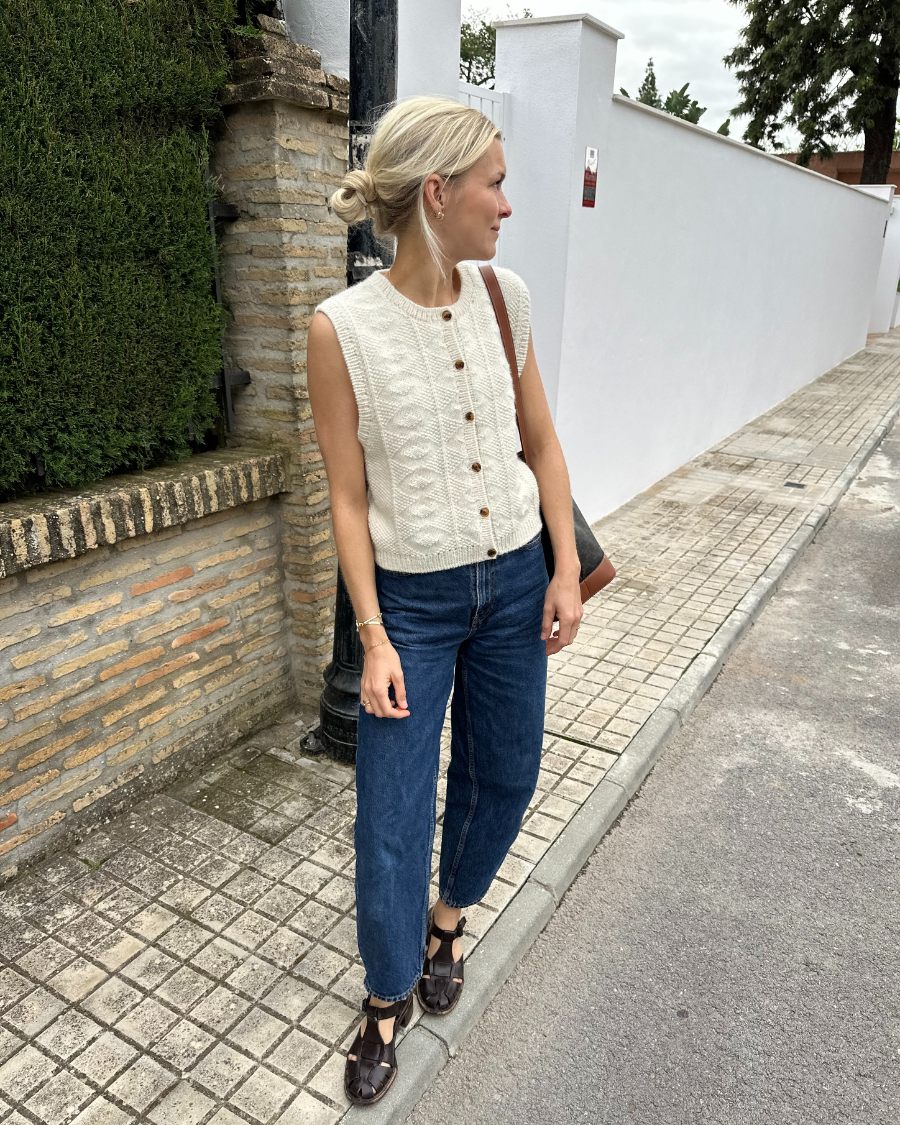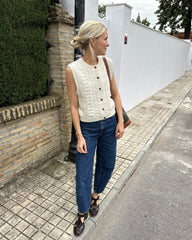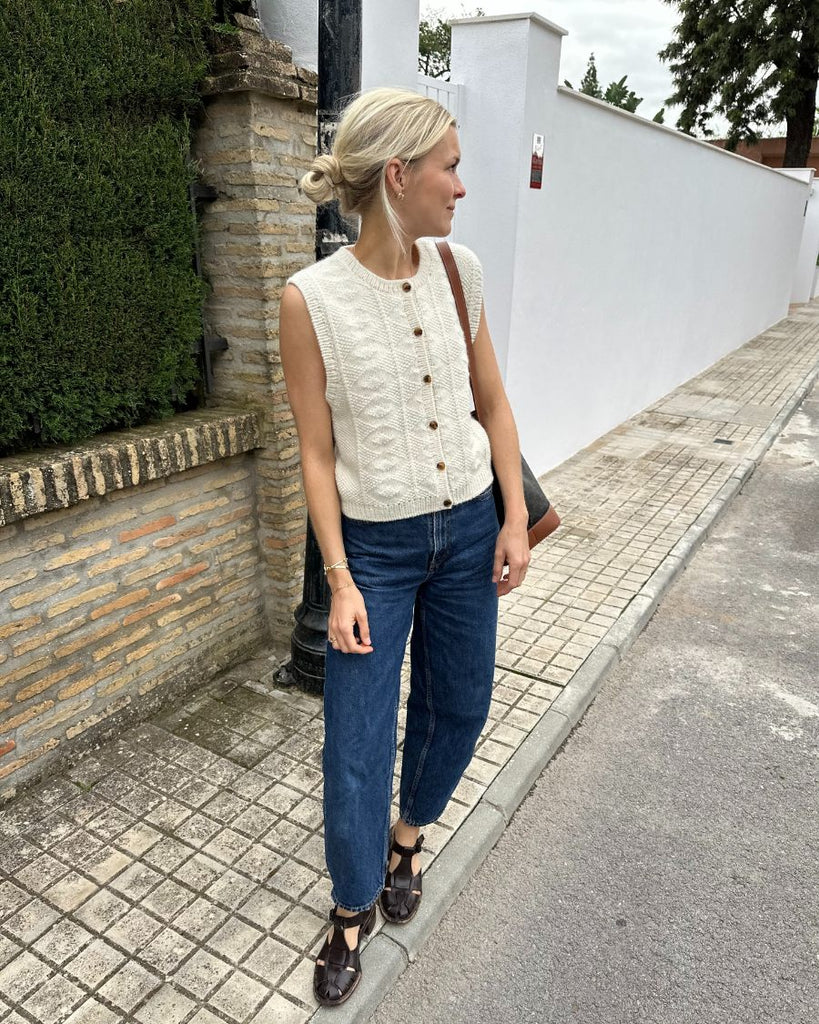Esther Vest
The Esther Vest is worked from the top down in a textured pattern. First, the back yoke is worked back and forth and shaped with increases. Then, the shoulders are worked from stitches that are picked up and knitted along the top of the back yoke. The body is worked back and forth. Rib edges are worked around the armhole openings. At the end, front plackets are worked as well as a ribbed neck edge.
Begin by knitting a swatch to determine which needle size will give you the correct gauge in the textured pattern. The swatch can be worked using a chart in the pattern.
Size guide
The Esther Vest is designed to have approx. 6 cm [2¼ inches] of positive ease. The sizes XXS (XS) S (M) L (XL) 2XL (3XL) 4XL (5XL) are designed to fit a bust circumference of 75-80 (80-85) 85-90 (90-95) 95-100 (100-110) 110-120 (120-130) 130-140 (140-150) cm [29½-31½ (31½-33½) 33½-35½ (35½-37½) 37½-39½ (39½-43¼) 43¼-47¼ (47¼-51¼) 51¼-55 (55-56) inches]. The measurements for the finished garment are on the front page of the pattern. Before beginning your project, measure yourself to determine which size will fit you the best. For example, if you measure 90 cm [35½ inches] around your bust (or around the widest part on your upper body) you should knit a size S. A size S slipover has a bust circumference of 96 cm [37¾ inches] which in the given example would give you 6 cm [2¼ inches] of positive ease.
Sizes: XXS (XS) S (M) L (XL) 2XL (3XL) 4XL (5XL)
Bust circumference: 88 (92) 96 (102) 106 (116) 126 (136) 146 (156) cm [34¾ (36¼) 37¾ (40¼) 41¾ (45¾) 49½ (53½) 57½ (61½) inches]
Length: 48 (52) 54 (56) 58 (59) 60 (63) 66 (70) cm [19 (20½) 21¼ (22) 22¾ (23¼) 23½ (24¾) 26 (27½) inches] (measured mid back excl. neck edge)
Gauge: 20 sts x 32 rows = 10 x 10 cm [4 x 4 inches] in texture pattern on a 3.5 mm [US4] needle
Needles: Circular needles: 3.5 mm [US4] / 60, 80 and/or 100 cm [24, 32 and/or 40 inches] and 3 mm [US2½] / 40, 60, 80 and/or 100 cm [16, 24, 32 and/or 40 inches]
Materials: 200-250 (250) 250 (300) 300 (300-350) 350 (350) 400 (400) g Jensen Yarn by Isager Yarn (50 g = 125 m [137 yds]) held together with 100 (100) 150 (150) 150 (150) 150 (150) 200 (200) g Spinni by Isager Yarn (50 g = 300 m [328 yds]) or 100 (100) 100 (100) 100 (100-150) 150 (150) 150 (150) g Alpaca 1 by Isager Yarn (50 g = 400 m [437 yds])
6 buttons (Ø = 15 mm)
Difficulty: ★ ★ ★ ★ ★ (5 out of 5)
See the classification of difficulty here.
This pattern is digital and will be sent as a pdf-file to your e-mail.
Schematics can be found here.
Buttons can be found here.
The white Esther Vest is knitted In Jensen Yarn by Isager in color 0 held together with Spinni by Isager in color 0.
Video
M1R on the RS:
M1L on the RS:
M1L on the WS:
M1R on the WS:
CDD:
Backwards Loop Method:
Picking up stitches for shoulder:
Italian bind-off:
Quick and easy italian bind-off:
Picking up stitches for sleeves:
Picking up stitches for front plackets:
Buttonholes:
Picking up stitches for neck edge:
Sewing a button onto knitwear:

















